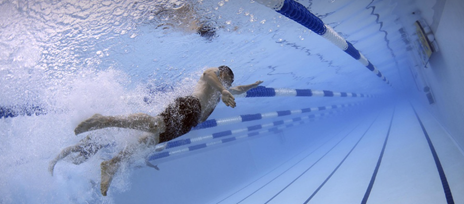Maintaining your pool with routine care is crucial for keeping it clean, safe, and enjoyable. Regular water testing and balance are key, but sometimes, chemicals alone can’t correct water issues. In such cases, draining and refilling the pool becomes necessary. It’s important to know the optimal time to perform this task to avoid damage and expensive repairs. Read on to understand why and when pool draining is needed, the risks involved, and the best timing for it.
To Drain or Not to Drain?
Draining a pool might seem straightforward, but it carries risks and can cause significant damage if not done properly. Here are two main reasons you might need to drain your pool:
1. Poor Water Quality: Issues like high levels of Total Dissolved Solids (TDS), Cyanuric Acid (CYA), or Calcium Hardness can degrade water quality. If TDS levels surpass 2,500 ppm, it becomes difficult to balance the water, requiring a drain and refill. Similarly, excessive CYA or Calcium Hardness can disrupt water chemistry, sometimes necessitating a complete pool drain.
2. Maintenance and Repairs: Draining may also be necessary for removing stains, scale, or algae on pool surfaces that can’t be treated with the water in. Acid washing, for instance, requires an empty pool to effectively remove these blemishes. Additionally, structural repairs like fixing cracks or resurfacing necessitate draining the pool to access and fix the issues properly.
Optimal Timing for Draining and Refilling Your Pool
The ideal times to drain and refill your pool are during the spring or fall. These seasons provide mild weather, reduced risk of storms, and ample time to complete the process before harsh conditions arise. Draining in the spring prepares your pool for the summer swimming season.
Times to Avoid Draining Your Pool:
- After Heavy Rain: Avoid draining after significant rainfall, as the increased water table can exert pressure that may cause an empty pool to shift or “pop out” of the ground.
- Before Water Rates are Calculated: Most states calculate annual water rates in the first three months of the year; draining your pool just before this period can unexpectedly increase your costs.
By choosing the right time to drain and refill your pool, you can ensure it remains in top condition while avoiding unnecessary complications and expenses.
___________
Pound Pool Plastering services residential and commercial pools in applying a wide variety of pool plaster finishes and complete renovations. We offer Diamond Brite, Sunstone, Hydrazzo, and Marcite – and a great selection of tile choices and coping stones. Owner Dale Pound personally oversees each pool project to ensure the highest quality is delivered. Call or email us for a free estimate.
Written by the Digital Marketing Team at Creative Programs & Systems: https://www.cpsmi.com/.






